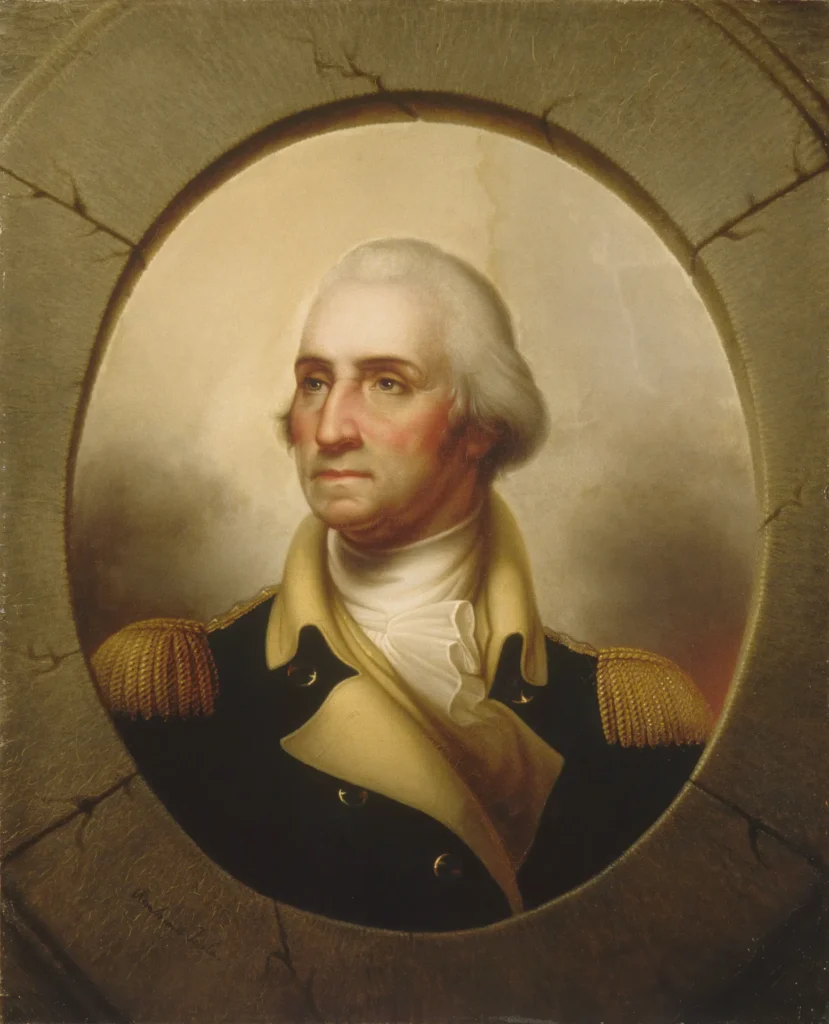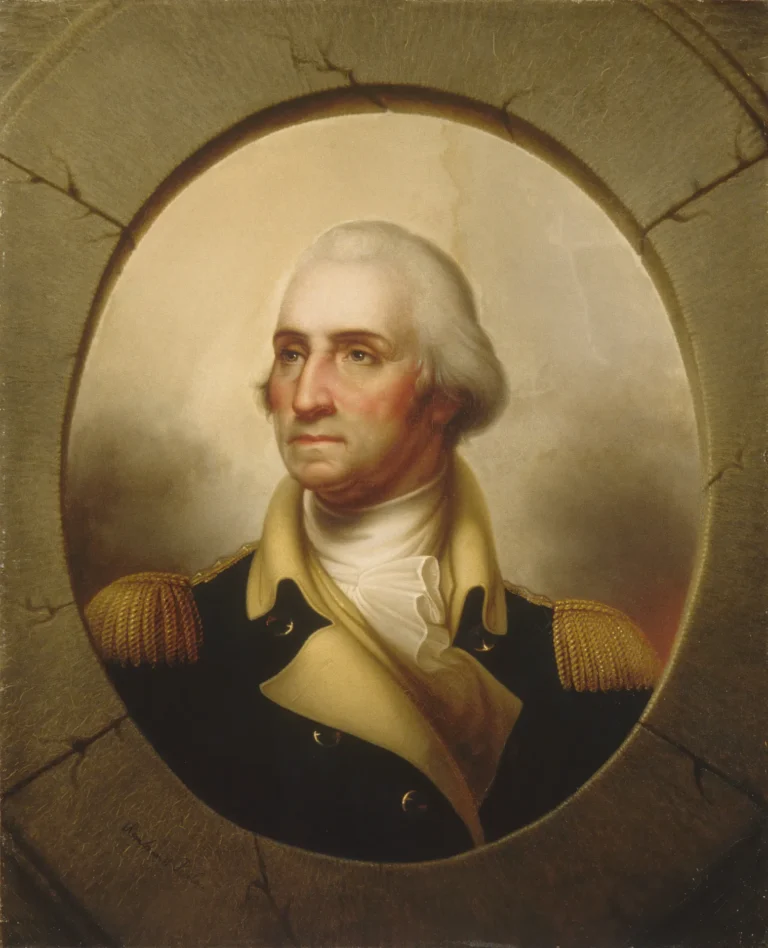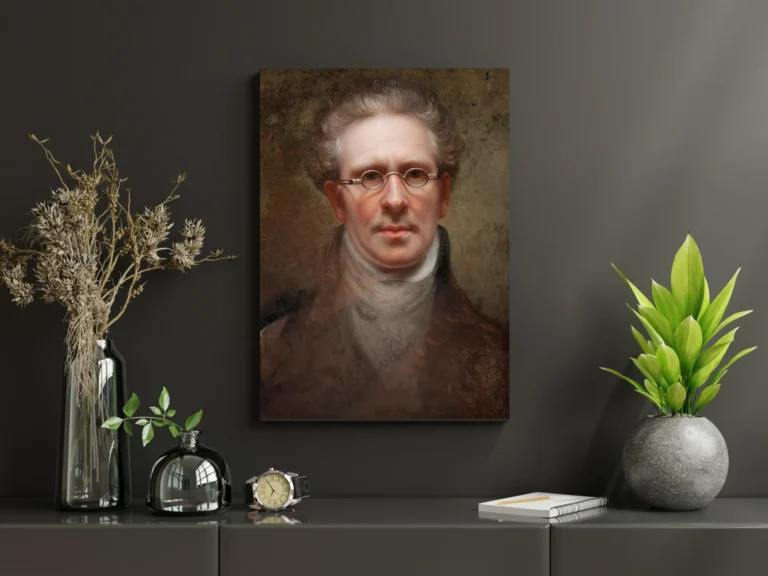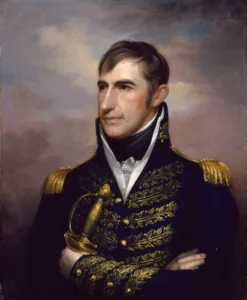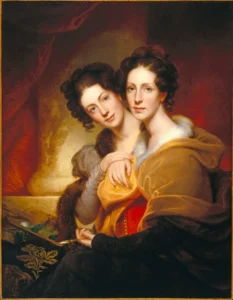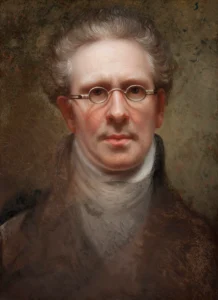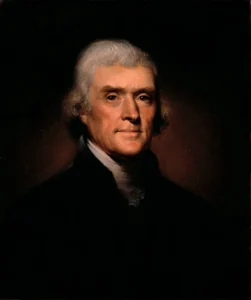George Washington II
Rembrandt Peale created several significant portraits of George Washington, each capturing different nuances of his character and legacy. Notable works include Washington before Yorktown, portraying him heroically during the 1781 siege; George Washington, Patriae Pater, an idealistic porthole style representation; and George Washington (1859), distinguished by its vibrant colors and design. These works are a testament to Peale's dedication to commemorating Washington's contributions to the nation.
1781, circa 1824, circa 1850, 1859
About the Artwork
Rembrandt Peale, a prominent American portrait painter, dedicated significant portions of his career to depicting George Washington, the revered first president of the United States. His paintings illustrate Washington's various roles—from a valiant military leader during the Revolution, as seen in Washington before Yorktown, to an embodiment of virtuous leadership in George Washington, Patriae Pater. Peale's portraits often use classical symbolism and innovative framing to reinforce Washington's status as the father of his country. As a result, these artworks not only serve as historical records but also as cultural icons reflective of young America's values. The series he developed culminates in a profound reflection on Washington's legacy that influenced American art and national identity long after his death.
Did You Know
The painting Washington before Yorktown captures a pivotal moment during the American Revolutionary War when Washington led the Continental Army to a decisive victory over British forces, ultimately culminating in the end of the war.
In George Washington, Patriae Pater, Peale incorporated classical motifs, such as the keystone mask of Jupiter, to convey Washington’s character as a leader. This tactic illustrated the ideals of republicanism and the new nation’s aspirations.
Rembrandt Peale’s dedication to George Washington went beyond mere portraiture; he created a series of over seventy-nine portraits, which shaped the visual narrative of Washington and contributed significantly to his mythos in American culture.




